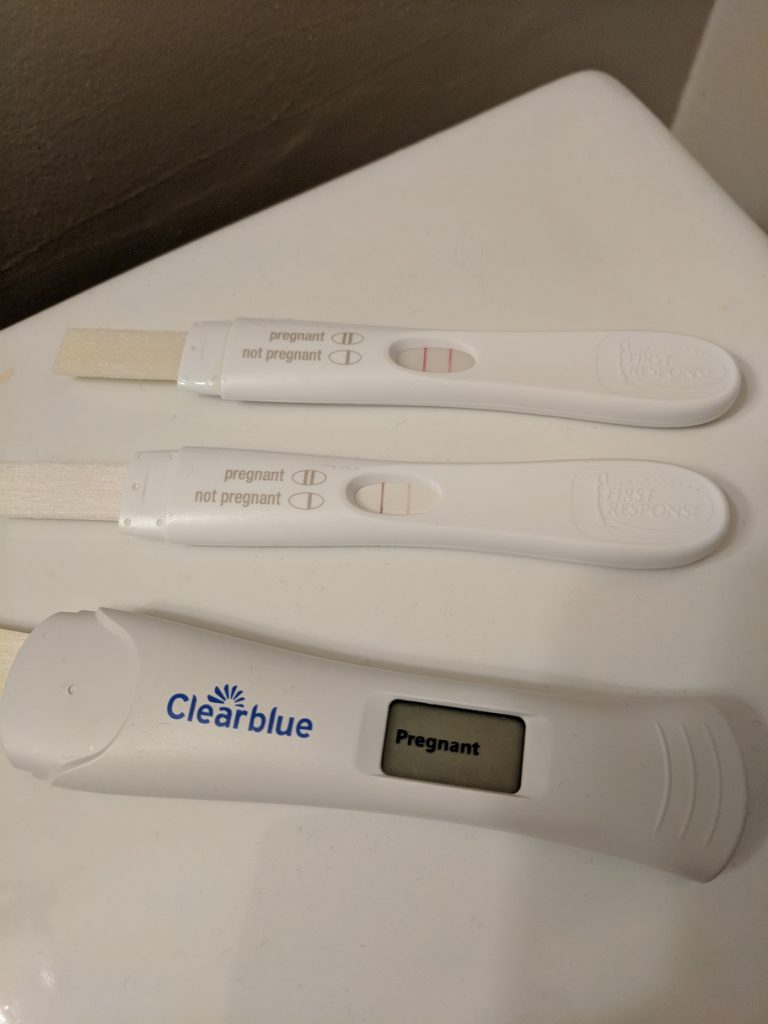You may discover that interpreting a pregnancy test, especially in the early days, is tougher than it seems.

You’re hoping so hard that this is your month to conceive, it’s understandable that you’d want to confirm a pregnancy as early as possible. For many women, that means taking a pregnancy test days before they expect their period. You may discover that interpreting a pregnancy test, especially in the early days, is tougher than it seems.
Evap Lines and “Line Eyes”
If you track your ovulation with test strips, you know the test line needs to be at least as dark as the control line to signal a surge of the right hormones for baby-making. Pregnancy tests don’t work the same way. They’re designed to pick up on hCG, or human chorionic gonadotropin. The developing placenta produces hCG after a successful embryo implantation, so any levels of it in your blood are a good indicator that a baby’s on the way. That means when you’re looking at a pregnancy test, a second line, no matter how faint, is a positive.
Determining what “counts” as a second line is where some people get into trouble. One common error is mistaking an evaporation, or evap, line for a positive result. Pregnancy tests are accurate when read within a tight time window, usually about 3-5 minutes. That’s because they’re meant to be read when the urine is still damp. Once the test dries, there might be a slight, colorless difference in shading between the test strip and the results window, where a line would appear. This colorless “line” isn’t a pregnancy indicator. Some people also strain so hard looking for the faintest of lines that they can convince themselves they see a hint of something (in forums, this hopeful willingness to see what isn’t actually there is often called “line eyes”).
My best advice, hard as I know it is to follow, is try not to stress over what seems like an ambiguous test. In early pregnancy, hCG levels double roughly every 48 hours. Higher levels lead to darker test lines, so if you are pregnant, you don’t have long to wait before an unmistakable positive
Is a Faint Line a Bad Sign? Nope! Getting a faint second line, even if you’re testing after your period was due, isn’t necessarily a problem. In fact, that’s what happened to me. Even a full week after my missed period, the test line was barely there.

This can happen for several reasons. Your hCG levels can dilute easily in urine, which is why most tests suggest using urine from your first trip to the bathroom after waking up. Drinking a lot of water or testing after a short hold of urine can lead to fainter results, even for a perfectly healthy pregnancy.
Your body may also naturally produce lower levels of hCG. The “normal” range for hCG in early pregnancy is vast:
- 4 weeks pregnant: 5-426 mIU/mL
- 5 weeks pregnant: 18-7,340 mIU/mL
- 6 weeks pregnant: 1,080-56,500 mIU/mL
In those early weeks of development, it’s much more important that levels are doubling normally, every 48-72 hours, than that the hCG meets a particular number. Doubling hCG is part of the reason why, if you take a subsequent test, you may notice a darker line.

While in general there’s no reason to worry about a faint positive, there’s one noteworthy exception. If you had a strong positive test line that is getting fainter on subsequent tests, and those tests are performed with a similar hold time on your urine, that can unfortunately be a sign of an early miscarriage or chemical pregnancy. If this happens to you, it’s important to remember that these early losses are almost universally due to a genetic issue and not anything you did. Take the time you need to process a loss, talk with your doctor, and keep faith that there will be a month that marks the beginning of the pregnancy that leads you to your baby.
